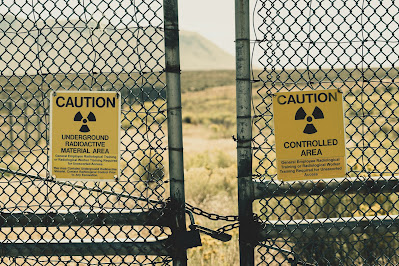Featured
Language Revitalization Efforts and Preserving Endangered Languages
Language Revitalization Efforts and Preserving Endangered Languages
Languages are an essential part of human culture and identity. They allow us to communicate, express ourselves, and connect with others. However, many languages around the world are endangered and at risk of disappearing. According to the Endangered Languages Project, over 40% of the world's approximately 7,000 languages are at risk of disappearing. This article will explore language revitalization efforts and the importance of preserving endangered languages.
What are Endangered Languages?
An endangered language is one that is likely to become extinct in the near future if it is no longer spoken or known by anyone. The reasons for language endangerment are varied and complex. Some languages are threatened by globalization, urbanization, and migration, while others are endangered due to political and economic factors, such as discrimination and lack of support from governments.
Why Preserve Endangered Languages?
Preserving endangered languages is crucial for maintaining cultural diversity and promoting linguistic and cultural rights. Languages are not just a means of communication; they are also an essential part of a community's identity, history, and traditions. When a language disappears, a community's cultural heritage and knowledge are lost forever.
Moreover, language loss can have negative effects on a community's social, economic, and political well-being. For example, language loss can lead to a loss of cultural identity, which can result in social and psychological problems such as depression, anxiety, and low self-esteem.
Language Revitalization Efforts
Language revitalization refers to efforts to revive and maintain endangered languages. Language revitalization can involve teaching, developing, cultivating, strengthening, and disseminating a language to make it a vital instrument of communication in daily life. There are many different approaches to language revitalization, depending on the specific needs and circumstances of the community. Some common strategies include:
Documentation: Documenting endangered languages is essential for preserving them. Linguists and language activists work with communities to record and document their languages through audio and video recordings, dictionaries, and grammars.
Language Teaching: Language teaching programs can help to revive endangered languages by teaching them to new generations. These programs can take many forms, including immersion programs, language nests, and language classes.
Community Involvement: Community involvement is essential for successful language revitalization efforts. Communities must be actively involved in the process of language revitalization, from planning and implementing language programs to promoting language use in daily life.
Technology: Technology can play a significant role in language revitalization efforts. For example, the Endangered Languages Project puts technology at the service of the organizations and individuals working to confront language endangerment by documenting, preserving, and teaching them.
Examples of Language Revitalization Efforts
There are many examples of successful language revitalization efforts around the world. One example is the revitalization of Quechua in the Andes. Quechua is an indigenous language spoken in the Andean region of South America. The language was threatened by Spanish colonization and government policies that discouraged its use. However, in recent years, there has been a renewed interest in Quechua, and efforts to revitalize the language have been successful. Today, Quechua is taught in schools, used in the media, and spoken by millions of people.
Another example is the revitalization of Maori in New Zealand. Maori is an indigenous language spoken by the Maori people of New Zealand. The language was threatened by colonization and government policies that discouraged its use. However, in recent years, there has been a renewed interest in Maori, and efforts to revitalize the language have been successful. Today, Maori is taught in schools, used in the media, and spoken by thousands of people.
Language revitalization efforts are essential for preserving endangered languages and maintaining cultural diversity. Endangered languages are not just a means of communication; they are also an essential part of a community's identity, history, and traditions. Preserving endangered languages is crucial for promoting linguistic and cultural rights and maintaining social, economic, and political well-being. There are many different approaches to language revitalization, and successful efforts require community involvement, documentation, language teaching, and the use of technology.
Citations:
[1] https://www.linguisticsociety.org/resource/endangered-languages
[2] https://www.endangeredlanguages.com/about/
[3] https://www.neh.gov/grants/preservation/documenting-endangered-languages
[4] https://journals.openedition.org/droitcultures/2661?lang=en
[5] https://en.wikipedia.org/wiki/Language_revitalization
[6] https://www.cambridge.org/core/books/cambridge-handbook-of-endangered-languages/revitalization-of-endangered-languages/D87B51651E699636B5A66532BC11051C
Comments
Popular Posts

Why are Memories Forgotten?
- Get link
- X
- Other Apps

How is the Colour of a Lobster Determined?
- Get link
- X
- Other Apps

Can Sound Waves Solve Plastic Pollution?
- Get link
- X
- Other Apps

Can Animals Recognise Human Faces?
- Get link
- X
- Other Apps

Is the Earth Spinning Faster?
- Get link
- X
- Other Apps

Do plants sleep? The surprising science of sleep in the plant kingdom
- Get link
- X
- Other Apps

Can Bad Times Actually Improve Your Life? Surprising Benefits of Adversity
- Get link
- X
- Other Apps

Can Brain Implants Make You More Powerful?
- Get link
- X
- Other Apps

The Future and Potential of Nuclear Batteries
- Get link
- X
- Other Apps

Could Sun Blocking be a Strategy to Combat Global Warming?
- Get link
- X
- Other Apps
Popular Posts

Why are Memories Forgotten?
- Get link
- X
- Other Apps

How is the Colour of a Lobster Determined?
- Get link
- X
- Other Apps

Can Sound Waves Solve Plastic Pollution?
- Get link
- X
- Other Apps

Can Animals Recognise Human Faces?
- Get link
- X
- Other Apps

so interesting
ReplyDelete